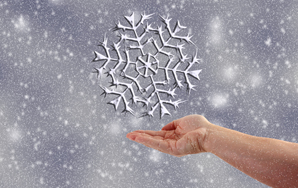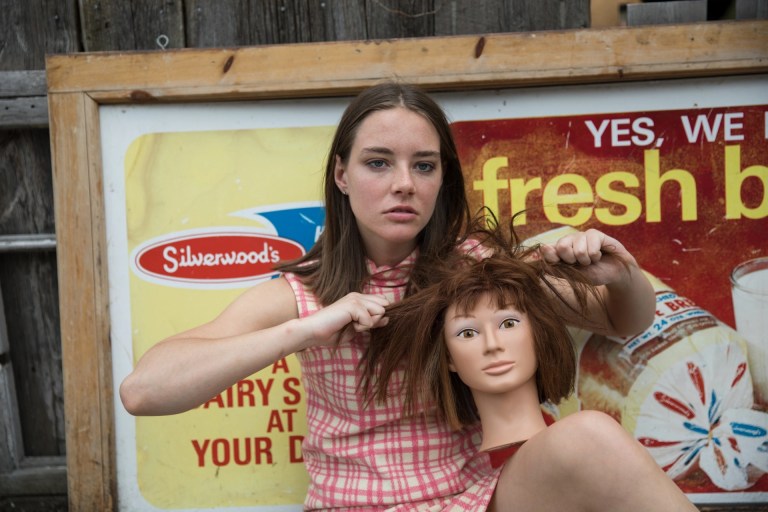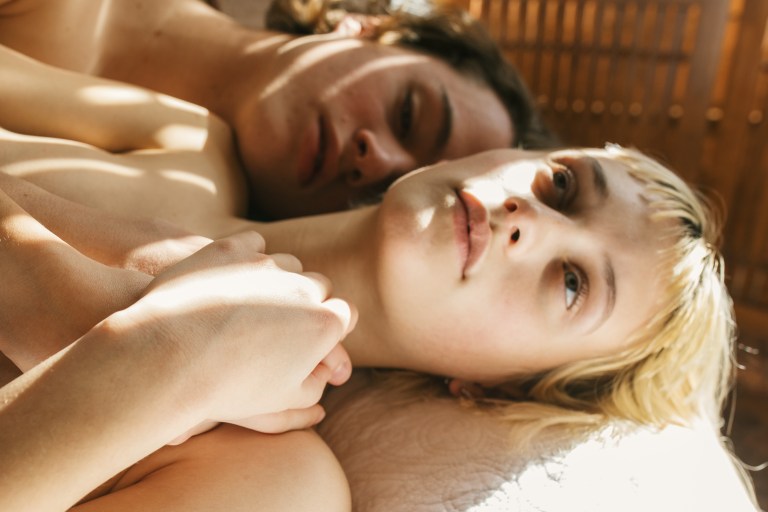How I Fell In Love With Winter In One Of The Snowiest Places On Earth
You notice that steam curling over a hot bowl of food or cup of coffee never looks more enticing than directly after you come home from a walk and look like the vintage Campbell’s Soup snowman.


For the majority of my life, I have not been a huge fan of winter. Like any American kid, I loved snow days when I was younger, but I’d be content with sledding for an hour or two and then trudging back inside to shed my sodden snowsuit and drown myself in chicken noodle soup and hot chocolate. I’d rather have sat inside at our kitchen’s bay window and looked at the pristine snow outside rather than mucked up its perfection by traipsing through it. As I grew older and had to drive or work in snow, my dislike of the winter weather became more pronounced.
And from a physiological standpoint, I am not well-equipped to deal with the cold. My coloring might suggest that my ancestors are from northern Europe, but it barely takes a chill in the air before my lips and nails turn pale blue and my teeth start chattering like the cymbals on those obnoxious little wind-up monkeys.
So it stands to reason that when I moved to one of the snowiest places on Earth, I would be moving to my own personal hell, a place that actually was frozen over. Aomori, the northernmost prefecture on Honshu, Japan’s largest island, gets an average of between nineteen and twenty-four feet of snow a year, depending on your source. Last year, during one of the harshest and longest winters in decades, we had several feet of snow well into April. Winter may only last for three months on the calendar, but in Aomori, it’s closer to five.
When I found out that I’d be moving there for a new job, I dreaded it. I told people, only half-joking, that I was afraid I’d come out of winter with the general coloring of Mr. Freeze from that awful Batman movie. And yet… I have grown to love winter, even in an environment that seems designed to make me hate it and desperately count down the days until spring.
For many who live in snowy climates and thrive, their happiness comes from an affinity for winter activities. But not me. I’m not a skier. I’m not a snowboarder. I love ice skating, but only when I’m bundled up with a scarf, hat, gloves, and two pairs of socks.
I have grown to love winter because of the serenity, the crispness, and the solitude that it brings.
When you live in one of the snowiest places on the planet, you come to value any encounter you have with fellow friends, because the weather makes it such a hassle to venture outside. You easily let hours slip by during evening get-togethers, until it makes more sense for everyone to stay under one roof for a huge sleepover with mattresses all dragged into one central room, rather then brave the snow and frigid wind.
You learn to appreciate things that had once just been mundane parts of everyday life, so insignificant that you didn’t even notice them. You value the green of fresh grass and leaves. You notice that steam curling over a hot bowl of food or cup of coffee never looks more enticing than directly after you come home from a walk and look like the vintage Campbell’s Soup snowman. You look forward to the quiet click and soft red glow of heat that emanates from your heater when it turns on in the morning.
And along with those little details that you learn to notice are things that you learn to do. You learn how to walk on uneven sheets of ice without falling, even when weighed down with the week’s groceries. And if you do fall, you learn how to do so in a way that doesn’t crush your bananas. You learn to prop your windshield wipers up at night so that the night’s snowfall doesn’t freeze them to your car. You learn a routine to drain your pipes in two minutes flat on particularly cold nights.
You realize that snow just doesn’t blanket everything in sight; it masks it. It covers objects, like garbage cans, fire hydrants, and rickety sheds, that might otherwise be considered eyesores and transforms them into white amorphous blobs without any corners or sharp edges. Winter brings mystery and unfamiliarity.
You find new ways to measure the passage of time. When you have to break out the heavy-duty, knee-high boots, it’s December. When the unplowed, accumulated snow reaches your waist, it’s January. When the icicles on your office’s eaves grow to be ten feet long, it’s almost February. When the sidewalks are ten inches higher than they usually are because of compacted snow and ice, it’s March.
When you live in one of the snowiest places on earth, you learn that, while the sun might set at an ungodly early hour, it rarely ever truly becomes dark. The dense, almost constant cloud cover means that light can’t escape, creating an eerie pale reddish or white glow, depending on the night, in the sky. You learn what it’s like to live in a snow globe.
You learn that snow is not only white. It is colored blue in the morning light or tinted golden by the streetlamps. You learn that there are a dozen different kinds of snow, from the heavy flakes that weigh down your eyelashes in clumps to the fine flurries that looks more like powdered sugar than anything else to the tiny, sparkling crystals that coat your windows like diaphanous frost. And on the rare nights when the sky is clear, you learn how beautiful snow and ice can be in the moonlight.
When you live in a place that could have inspired the White Witch’s endless winter in Narnia or the expanses Beyond the Wall in A Song of Ice and Fire, you see beauty in untouched snowscapes and freshly fallen powder. New words and phrases enter your vocabulary, like “snow monsters,” or trees that are so completely covered by wind-driven snow that they look more like hulking creatures who froze and let the snow fall around them.
You start to recognize new sounds, like the racket a fifty-pound chunk of frozen snow will make when it falls from your roof at three in the morning. You learn to detect the sound of snow falling. When you walk with someone, you recognize the sudden shifts and rises in their voice that signify the mini-heart attack of almost falling and just barely catching themselves.
You learn there are two perfect soundtracks for walking in a snowfall: Sigur Rós and silence. You learn to love the nights when the roads are unoccupied and lit only by a few streetlamps and that unearthly glow in the sky. You come to relish nocturnal solitary walks, as cold as they might be, the stillness broken only the sound of your breath as it puffs out in frozen clouds and your boots crunching the snow underfoot.
True, living in one of the snowiest places on earth has its rough spots. Your olive oil (or worse, your Nutella) might freeze into one solid chunk. Icicles might form in your shower. Forget black ice; your real enemy is white ice, the snow that’s been worn so slick by tires and other shoes that it sends you straight off your feet. I’ve experienced all of those things, but my mood is instantly lifted by walking to the end of the street on an early Saturday morning and looking down the undisturbed road covered by a canopy of snowy branches.
When you learn to love a location’s winter, you know you have learned to love every facet of that place. ![]()




